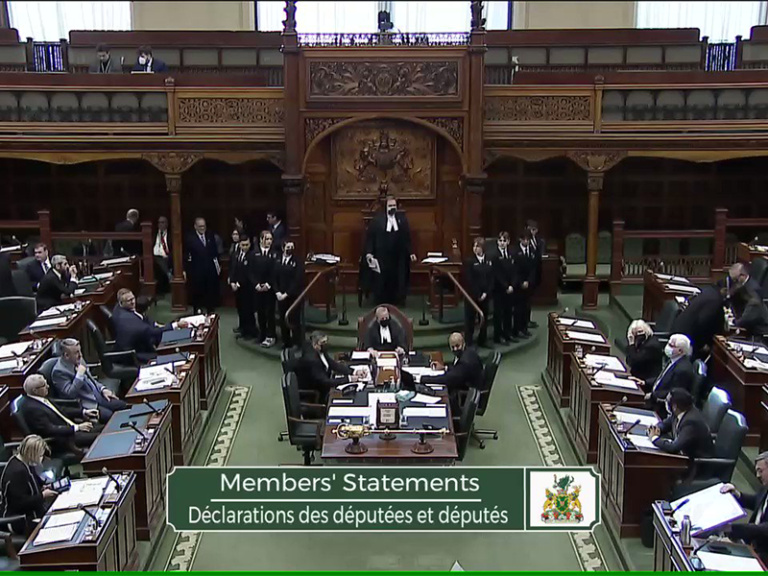By Deborah O’Connor
 In Part Two of this series we looked at the Central East LHIN in detail, including its Integrated Health Services Plan, which noted mental health and addiction issues to be a priority, but not one of the chosen few for active improvements. This came in spite of the production of an Addiction Environmental Scan undertaken in 2008 showing just how serious the issues had become. The report, found on the LHIN website, was produced in March 2009 and appears to have gathered mostly dust since then, if mental health services in Northumberland today are any indication.
In Part Two of this series we looked at the Central East LHIN in detail, including its Integrated Health Services Plan, which noted mental health and addiction issues to be a priority, but not one of the chosen few for active improvements. This came in spite of the production of an Addiction Environmental Scan undertaken in 2008 showing just how serious the issues had become. The report, found on the LHIN website, was produced in March 2009 and appears to have gathered mostly dust since then, if mental health services in Northumberland today are any indication.
The study listed eight findings, all of them causing real concern. First, a lack of treatment options was identified, including treatment for opioid addiction and crisis beds. Second, a lack of services for people with concurrent mental health conditions and substance abuse disorders was noted along with a shortage of detox centres for withdrawal management. Third on the list was a lack of services for ethno/racial/cultural minorities, a state presumably more acute in places like Scarborough, which sits on the most western end of the Central East LHIN, with its dense immigrant population. Other findings included a lack of after-care; lack of 24-hour outreach and basic services; an unfortunate failure of support from primary care settings with a need for better training of doctors and frontline staff; lack of coordinated case management; and, a shortage of supportive housing for patients.
Other telling statements in the addiction study included the comment that there was not enough funding to support appropriate treatments, with the result that service providers had to choose between staff cutbacks so less service was offered or higher caseloads to try and meet demand. It was noted that many agencies have restrictive mandates excluding patients needing treatment, that the extremely fragmented system of mental health care makes coordination and consistency even more difficult.
The recommendations in the report call for more money to fund mental health and addiction programs, naturally enough. With more funding, improvements like better programs for concurrent disorders could be implemented; agencies could broaden their mandates to include patients currently left out; more staff training could be provided, more housing for patients created, better case management and programs targeting specific groups like youth could be started. It seems the Central East LHIN knows what it needs to do; it just needs the right combination of funding and political will to act. The social stigma associated with mental illness and addiction means these patients are often blamed for their conditions and deemed undeserving of our help. And, it seems the more rural the area; the worse the stigma. That single fact likely plays a big role in explaining the years of foot-dragging occurring in implementing the report’s recommendations released over two years ago.
Small improvements have been made, but they are not enough. In the meantime, people contacting Lakeshore Community Mental Health Counselling Centre in Cobourg after their work hours of weekdays 8 am to 4 pm get a machine telling them the following if they are in crisis: call 911; go to “your nearest hospital”, or call a toll-free number to reach Four County Mental Health Crisis Response Program, which at least operates their phone line 24/7. Northumberland Hills Hospital, which operates Lakeshore Counselling, has no psychiatric beds and no trained crisis worker around the clock. Surely, we can do better for these most vulnerable residents.



Those are excellent quotes posted by Bill, I certainly agree with all of them. When it comes to mental health issues I’m not confident that any party will ensure they get the attention they need in the coming years. There is so much stigma associated with mental illness and its frequent companion, addiction, that it’s subject to the “blame the victim” syndrome where the problem is ascribed to the individual’s lack of character or laziness instead of the illness. Like the miserable poverty so many people find themselves trapped in, mental illness just isn’t a popular cause so politicians stay away from it lest they be associated with something that’s controversial as well as unpopular.
According to the Ontario Mental Health & Addictions Alliance, the source of some of my research for the series I wrote, the NDP election platform contains little to nothing about mental health. The other parties make some vague promises according to the Alliance that don’t amount to the kind of concrete steps we need to take.
If we want to see improvements in mental health care in Northumberland, we need somehow to get the attention of both the Central East LHIN, the NHH board of directors and their various advisory committees. They are the ones who decide how the provincial money gets allocated here, and the local actors are much more interested in making the older, wealthy hospital donors happy. That means senior’s care is the top priority and it’s likely going to remain so unless there is an organized outcry.
They could learn a lot from Campbellford Hospital’s Mental Health Services Team, where they pay real attention to their patients’ needs and not just on the bottom line.
Hey, Deb, I’m commenting here in the hope that you are following responses to your posts.
Here is what I’ve done:
— reviewed some material in Washburn’s backgrounder for the issue, including watching the TVO round-table on the Ontario Crisis in Mental Health;
— read all three of your posts, which bring the issue down to earth in Northumberland.
Some remarks from the TVO broadcast that make sense to me:
— Ryan Fritsch
— Psychiatric Patient Advocacy Office
“The 10 Year Strategy Report is an aspirational document. It tells us a lot of things that we already know. It tells us that the system is fractured. There are a series of silos. Services are distributed across the system….
“We know what is working right now. There are endless examples of programs that have been in place for years: things like mobile crisis teams, things like supportive housing, things like advocacy. We know what works. What we need is for there to be action.”
— Steve Lurie
— Canadian Mental Health Association
“We actually know far more than we did 20 years ago about the things that work. We know that supportive housing works. We know that assertive community treatment works. We know that peer-operated services work. We know that peer support works. . . . We have to scale-up the implementation of things that have already proven themselves.”
For me, these are areas of importance in the current Ontario election campaign:
— for kids, education
— for seniors, health
— for the in-betweeners, jobs
In addition, I support this underlying premise: We must ensure that whatever we do in these three areas also works to reduce rather than increase income inequality in the province.
A party that I trust to act on these three issues in a way that does not increase income inequality is also a party that I will trust to act on mental health for all.
For me, the relevant electoral questions are these:
1) Have the actions of the current Liberal government been significantly deficient in any of the the three areas noted above?
2) If so, have better actions been proposed (and are they likely to be taken) by any of the opposition parties?
What about you? I’d like to hear how you are taking mental health into account in the current election campaign.